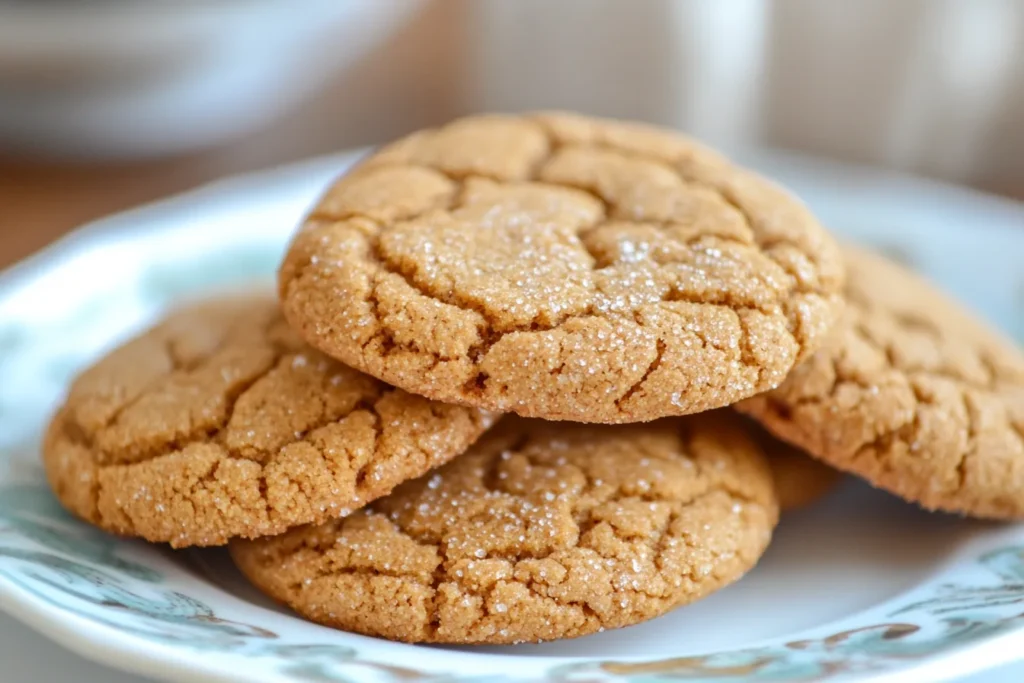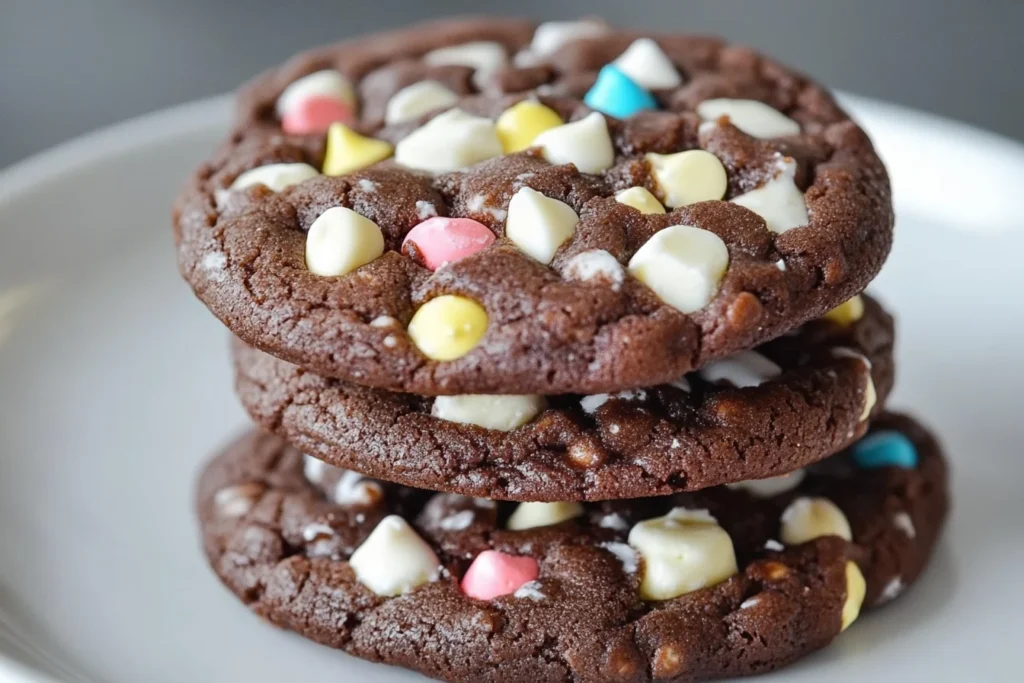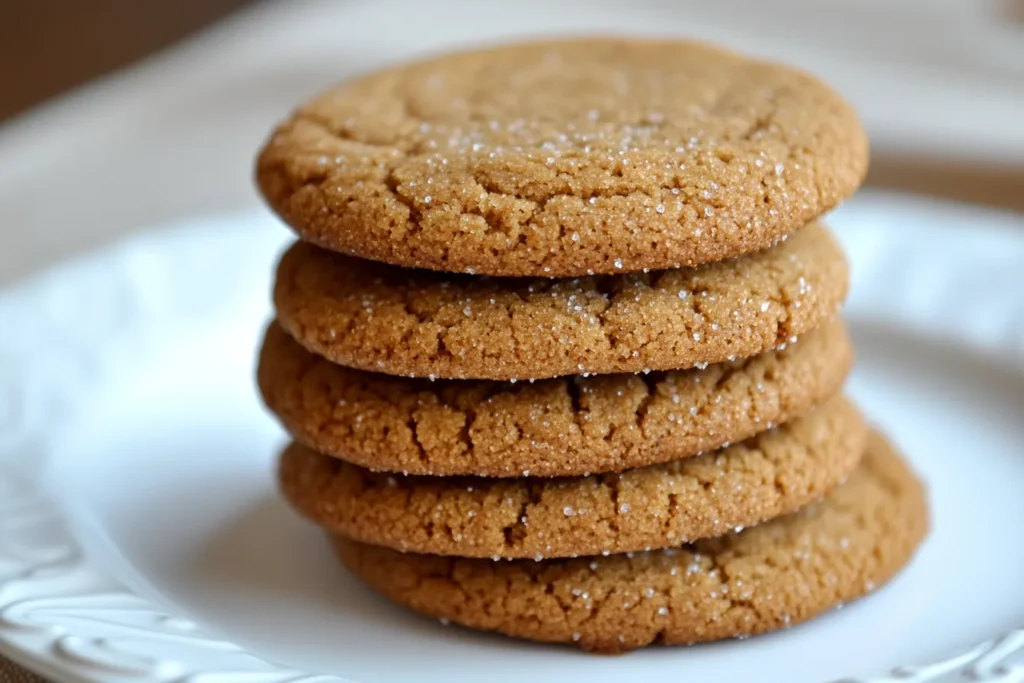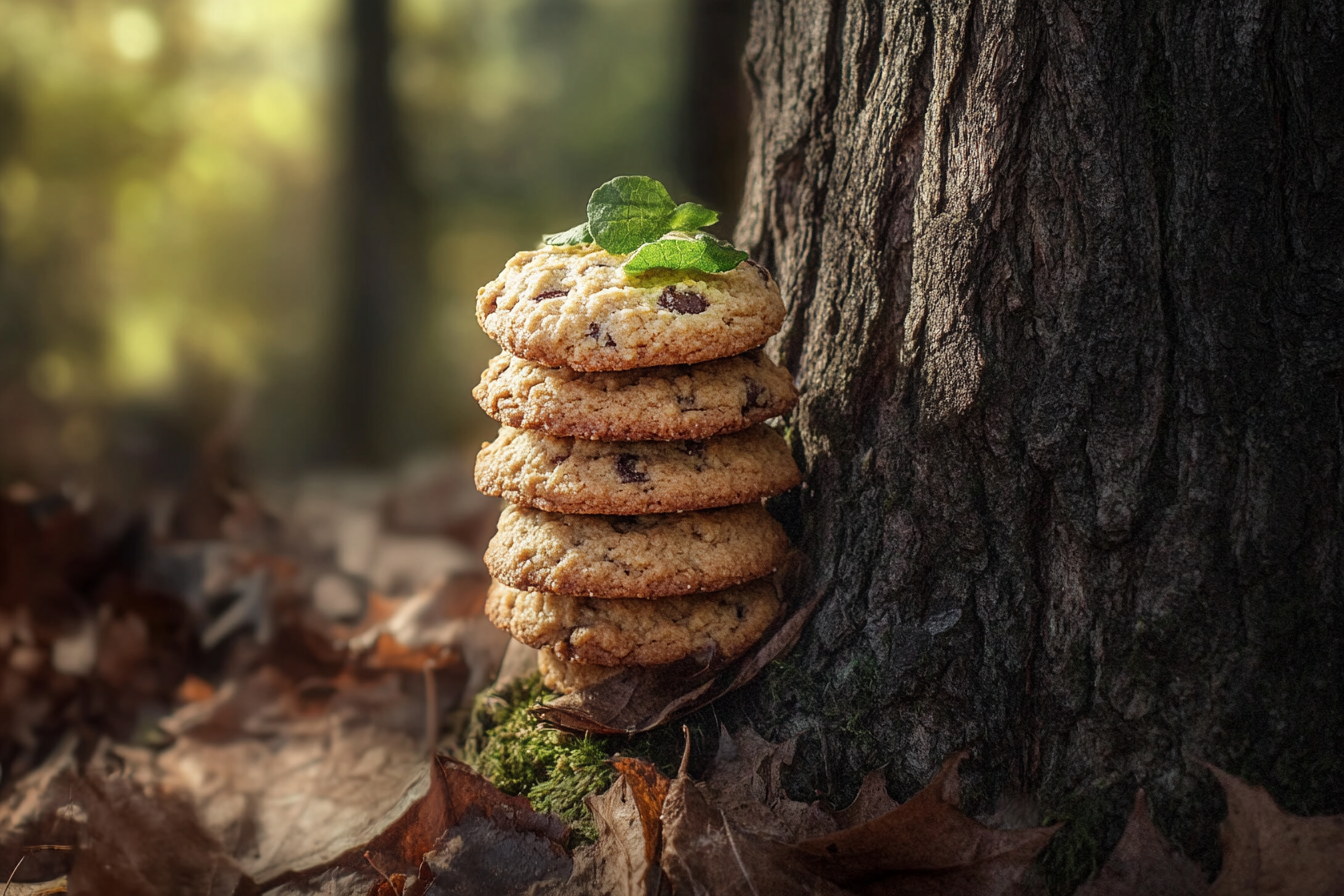Everyone loves a good cookie, but chewy cookies? They hold a special place in the hearts of cookie lovers everywhere. The perfect chewy cookie offers a harmonious blend of texture, flavor, and melt-in-your-mouth satisfaction. So, what exactly sets them apart, and how can you achieve that coveted chewiness? Let’s dive into the secrets.
Part 1: Introduction to Chewy Cookies
1. What Defines a Chewy Cookie?
A chewy cookie has a distinct texture that stands out from its softer or crisper counterparts. It’s dense and tender but not crumbly, with a slight elasticity when bitten. The hallmark of chewiness is moisture retention, which gives the cookie its signature bite. While softness is about tenderness, chewiness is about resistance—a quality that makes every bite more satisfying.
2. How Chewiness Differs from Softness and Crispiness
Understanding the difference between these three cookie textures is key:
- Softness: Relies on fat content and shorter baking times. Soft cookies crumble easily and feel light.
- Crispiness: Comes from thinner doughs with less moisture and longer baking. Crisp cookies snap when broken.
- Chewiness: Strikes a balance between the two, combining moisture, dense dough structure, and just the right baking method.
By tweaking your ingredients and techniques, you can pivot between these textures.
3. Why People Love Chewy Cookies
Chewy cookies are universally beloved because of their indulgent, almost nostalgic quality. Each bite feels more satisfying as the chewiness slows down the eating experience, letting flavors linger. People often associate chewy cookies with home-baked goodness, offering comfort and a sense of craftsmanship.

Key Ingredients for Chewy Cookies
Creating chewy cookies starts with understanding how each ingredient contributes to the final texture.
4. Importance of Fat in Creating Chewy Textures
Fat is the backbone of a chewy cookie. It adds moisture, richness, and structure. Butter is a go-to choice for its flavor, but incorporating other fats like shortening or even oil can amplify chewiness.
- Melted butter: Incorporating melted butter in your dough hydrates the flour and creates a denser texture.
- Balance: Too much fat can make the cookies greasy, while too little can dry them out.
5. The Role of Sugar Types: Brown Sugar vs. Granulated Sugar
Not all sugars are created equal when it comes to cookies:
- Brown sugar: Contains molasses, which retains moisture and contributes to a softer, chewier texture.
- Granulated sugar: Adds crispness and spread but reduces moisture retention.
For ultimate chewiness, using more brown sugar than white sugar is the key. Consider ratios like 3:1 to maximize moisture without losing structure.
6. Choosing the Right Flour: All-Purpose vs. Bread Flour
Flour is another critical ingredient. The protein content in flour determines gluten development, which directly impacts chewiness.
- All-purpose flour: Offers a balanced gluten content, suitable for most cookies.
- Bread flour: Higher protein levels lead to more gluten, which enhances chewiness. Consider using a mix of both flours for the ideal result.
7. Eggs and Yolks: Adjusting for Chewiness
Eggs provide structure and moisture, but it’s the yolks that are the secret to chewiness:
- Whole eggs: Contribute to structure and lightness.
- Extra yolks: Add richness and softness, ensuring the cookie stays dense and moist.
Try adding one extra yolk to your recipe for a noticeable difference in chewiness.
8. Secret Ingredient: Cornstarch or Cream of Tartar
If you’re looking to perfect your chewy cookies, don’t skip the secret ingredients:
- Cornstarch: Softens the flour’s protein content, creating tender cookies.
- Cream of tartar: Adds slight acidity, which can enhance the chewiness by affecting gluten formation.
These additions work best in small amounts—1–2 teaspoons in the dough can make all the difference.
Techniques to Achieve Chewy Cookies
Even the best ingredients won’t work their magic without the right techniques. Here’s how to ensure success.
9. Mixing Techniques: Avoiding Overbeating
Overmixing your dough can ruin chewiness by over-developing gluten. The key is to mix ingredients just until combined:
- Wet ingredients: Cream the butter and sugar until smooth, but avoid over-aerating the mixture.
- Dry ingredients: Fold them in gently, ensuring no pockets of flour remain but without excessive mixing.
This helps maintain a tender, chewy texture.
10. Chilling the Dough: The Impact of Resting Time
Chilling dough isn’t just about preventing spread; it’s also about enhancing chewiness:
- Moisture absorption: Resting allows the flour to fully hydrate, creating a denser dough.
- Flavor enhancement: Chilling develops deeper flavors as the sugars caramelize.
Aim to chill the dough for at least 30 minutes, but overnight chilling often yields the best results.

The Secret to Chewy Cookies: A Comprehensive Guide (Continued)
Part 2: The Science Behind Chewy Cookies
Understanding the science of chewy cookies can elevate your baking skills. From gluten development to hydration, each aspect of your cookie’s texture can be optimized with a bit of culinary science.
11. The Role of Gluten Development in Texture
Gluten is the network of proteins in flour that gives baked goods their structure. In cookies, gluten contributes to the density and elasticity crucial for chewiness.
- Minimal mixing: Prevents overdeveloping gluten, which can result in tough cookies.
- Using bread flour: Enhances gluten levels, improving the cookie’s chew factor.
For ultimate control, consider experimenting with gluten ratios. Combine bread flour with all-purpose flour to balance chewiness and tenderness.
12. Hydration Levels in Cookie Dough: Moisture is Key
Hydration is what sets a chewy cookie apart. Moisture content in the dough influences how your cookie bakes and how long it retains that chewy texture.
- Eggs and fats: Provide natural hydration.
- Dough consistency: A slightly sticky dough often yields the best results.
If the dough feels dry, add a teaspoon of milk or a touch of water to adjust hydration levels before chilling.
13. Sugar’s Role in Retaining Moisture
Sugar isn’t just for sweetness—it’s also a humectant, meaning it holds onto moisture. Brown sugar is the star here due to its molasses content, which keeps cookies soft and chewy for longer.
- White sugar: Tends to dry out cookies faster.
- Ratio adjustments: Use a higher percentage of brown sugar to maintain chewiness.
For additional moisture retention, try adding a tablespoon of honey or maple syrup to the mix.
Baking Process Tips
Even with the right ingredients and dough preparation, how you bake your cookies will make or break their texture.
14. Oven Temperature and Its Impact on Chewiness
Temperature is critical. Too high, and the cookies set too fast, resulting in dryness. Too low, and they spread excessively.
- Ideal range: 325°F to 350°F works best for chewy cookies.
- Preheating: Ensures consistent baking by preventing temperature fluctuations.
For an even bake, rotate your cookie sheet halfway through cooking.
15. Baking Times: Striking the Right Balance
Chewy cookies require precision when it comes to baking time:
- Underbaking: Leaves the center soft and gooey, enhancing chewiness.
- Cooling carryover: Remember that cookies continue to bake on the sheet after being removed from the oven.
Set timers for the lower end of the suggested bake time (8–10 minutes for most recipes) and adjust as needed.
16. Sheet Type and Spacing: How It Affects Texture
The type of baking sheet you use can significantly impact your cookies’ texture:
- Dark sheets: Absorb more heat, potentially overbaking the bottoms.
- Light sheets: Distribute heat evenly for consistent results.
Spacing matters, too. Allow at least 2 inches between cookies to prevent spreading into one another.
17. Using Parchment Paper vs. Non-Stick Mats
The surface you bake on can affect the final outcome:
- Parchment paper: Creates a breathable layer that helps cookies bake evenly.
- Silicone mats: Retain heat, which can promote spreading and thinner cookies.
For thicker, chewier cookies, stick with parchment paper.
Variations for Different Flavors
Personalizing your chewy cookies can lead to delightful flavor experiments.
18. Chocolate Chip Cookies: Tweaks for the Chewiest Outcome
Classic chocolate chip cookies are the ultimate playground for chewiness tweaks:
- Chocolate type: Use chunks or disks instead of chips for richer, melty pockets.
- Salt balance: Add a sprinkle of sea salt on top to contrast the sweetness.
Chilling the dough overnight enhances the chew and deepens the flavor profile.
19. Incorporating Nuts and Add-Ins Without Losing Chewiness
Adding nuts or mix-ins like dried fruits can disrupt the cookie’s chew if not handled correctly:
- Chop add-ins finely: To avoid overwhelming the dough structure.
- Hydrate dried fruits: Soak them briefly in water or juice before mixing in.
Stick to a 1:4 ratio of mix-ins to dough for the best texture.
20. Chewy Cookies with Alternative Flours (Gluten-Free Options)
Baking gluten-free doesn’t mean giving up on chewiness. Substitute regular flour with:
- Almond flour: Adds moisture and richness.
- Tapioca starch: Helps mimic the elasticity of gluten.
Combine multiple gluten-free flours for better results, and consider adding xanthan gum to improve structure.

The Secret to Chewy Cookies: A Comprehensive Guide (Continued)
Part 3: Common Mistakes to Avoid
Even seasoned bakers make missteps when chasing the perfect chewy cookie. Avoiding these common pitfalls will bring you closer to your chewy cookie dreams.
21. Overbaking: The Enemy of Chewy Cookies
Overbaking is one of the most common mistakes that sabotage chewiness. Once cookies are in the oven, timing is everything.
- Visual cues: Remove cookies when the edges are set but the centers appear slightly underdone.
- Cooling process: Allow cookies to cool on the baking sheet for 2–3 minutes before transferring them to a wire rack.
Remember, cookies continue to cook after they’re removed from the oven, so err on the side of underbaking.
22. Skipping Dough Chilling: Why It’s Essential
Skipping the chilling step can lead to flat, spread-out cookies that lose their chewy texture.
- Chilling benefits: Resting the dough solidifies the fat, controls spread, and allows the flour to absorb moisture fully.
- Ideal chilling time: A minimum of 30 minutes is essential, but overnight chilling delivers the best results.
For convenience, divide the dough into pre-portioned balls before chilling—it makes baking easier and faster.
23. Using the Wrong Sugar Ratios
The balance between brown sugar and granulated sugar is critical for achieving chewiness.
- Too much white sugar: Leads to drier, crispier cookies.
- Too much brown sugar: Can result in overly soft cookies that lack structure.
Stick to ratios like 70% brown sugar and 30% granulated sugar for the perfect chew.
Expert Secrets for Chewy Cookies
These pro tips can elevate your cookie game to bakery-level excellence.
24. Adding Extra Egg Yolks for Richness
An extra egg yolk adds fat and emulsifiers, making cookies richer and chewier.
- Why it works: Yolks bind the dough while contributing moisture and softness.
- How to use: Replace one whole egg with two yolks for an extra indulgent texture.
This trick works especially well in recipes for chocolate chip and oatmeal cookies.
25. Swapping Granulated Sugar for More Brown Sugar
Switching out granulated sugar for brown sugar can supercharge moisture retention.
- Best practice: Use dark brown sugar for an even more intense chew.
- Result: A cookie with deeper flavor and a tender, chewy interior.
For recipes that call for white sugar exclusively, try replacing at least 50% with brown sugar.
26. Using Melted Butter for Maximum Chewiness
Melted butter changes the dough’s consistency, creating a denser, chewier cookie.
- Why it works: Melting butter ensures that it’s evenly distributed, promoting gluten development.
- Precaution: Allow the butter to cool slightly before mixing to prevent cooking the eggs.
This method works wonders in recipes where chewiness is the star.
27. The “Underbaking” Strategy
Slightly underbaking cookies is a tried-and-true trick for chewiness.
- What to look for: Remove cookies when the centers are still slightly glossy and soft.
- Cooling tip: Let the cookies set fully as they cool for the ideal texture.
Pair this strategy with parchment paper or silicone mats for even heat distribution.
FAQs About Chewy Cookies
Here are answers to some frequently asked questions about achieving the perfect chewy cookie.
1. Can I Achieve Chewiness Without Eggs?
Yes! Substitute eggs with:
- Applesauce (¼ cup per egg)
- Greek yogurt (¼ cup per egg)
- Chia or flax seeds (1 tablespoon mixed with 2.5 tablespoons water)
These alternatives add moisture and binding properties, mimicking the chewiness eggs provide.
2. Why Do My Cookies Harden After Cooling?
This often happens due to overbaking or insufficient moisture in the dough. Ensure proper hydration levels by:
- Using more brown sugar.
- Underbaking slightly.
Store cookies in an airtight container with a slice of bread to maintain softness.
3. How Can I Adjust Recipes for High Altitude Baking?
At high altitudes, cookies tend to dry out quickly. Adjust by:
- Increasing the liquid (e.g., milk or water) slightly.
- Reducing sugar slightly to prevent excessive spread.
Experiment with shorter baking times to avoid over-drying.
4. Can I Use Oil Instead of Butter for Chewy Cookies?
Yes, but the texture will differ slightly. Oil creates a softer cookie but lacks the structure and flavor of butter. For best results:
- Use a neutral oil, like vegetable or canola.
- Mix oil with a touch of butter for flavor.
5. What’s the Best Way to Freeze Cookie Dough?
Freezing dough can enhance flavor and make baking easier. Follow these steps:
- Shape the dough into balls before freezing.
- Store in an airtight container or freezer bag.
- Bake directly from frozen, adding 1–2 minutes to the bake time.
6. How Do I Prevent Cookies from Spreading Too Much?
Chilling the dough is the best solution. Other tips include:
- Using parchment paper instead of greased baking sheets.
- Adding slightly more flour to the dough.
7. Can I Make Chewy Cookies Gluten-Free?
Absolutely! Use gluten-free flour blends that include xanthan gum. Almond flour, oat flour, or coconut flour can also be combined for chewiness.
8. What Type of Chocolate Works Best in Chewy Cookies?
Dark chocolate chunks or discs melt beautifully, creating gooey pockets. Avoid chocolate chips with stabilizers, as they don’t melt as well.
9. Why Is My Dough Too Sticky to Work With?
Sticky dough is often due to high moisture content. Fix it by:
- Chilling the dough to firm it up.
- Dusting your hands lightly with flour while shaping.
10. Can I Double the Recipe Without Losing Chewiness?
Yes, but mix in batches to avoid overworking the dough. Divide the dough into portions to ensure consistent hydration and even mixing.

